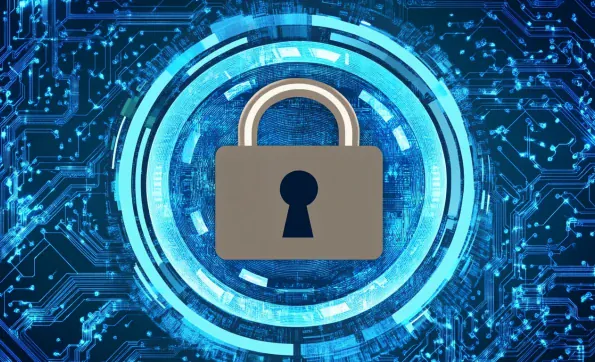The field of cybersecurity is dynamic and ever-evolving, with professionals constantly racing to outmaneuver malicious actors. As we look ahead to 2025, several key trends and opportunities are emerging, informed by both current trends and expert insights. These developments underline the critical role of artificial intelligence (AI), evolving threats such as ransomware, geopolitical factors, regulatory changes, the evolving role of Chief Information Security Officers (CISOs), supply chain vulnerabilities, and increasing challenges related to Application Programming Interface (API) security. Each of these areas presents both challenges and opportunities as the world continues to digitize and interconnect more extensively.
The Rise of Generative AI: Friend and Foe
Generative AI is becoming increasingly influential, serving both hackers and defenders. For cybercriminals, AI enhances their toolkit, enabling the creation of sophisticated threats. AI-driven voice phishing (vishing) attacks are expected to become more effective and realistic, leading to increased identity compromises, ransomware incidents, and data exfiltration. AI agents can manipulate private data within AI models, significantly elevating the threat to digital trust by generating convincingly fabricated profiles that can evade traditional Know Your Customer (KYC) and biometric checks.
Conversely, AI also strengthens cybersecurity defenses. When combined with skilled security teams, AI can revolutionize initial threat investigation and incident resolution in Security Operations Centers (SOCs). The lack of relevant talent and the escalating complexity of cyber threats present a perfect storm for self-help IT solutions, furthering the automation of business functions and enhancing competitiveness. Advanced AI capabilities are improving software testing processes, enabling the development and release of more secure applications. By leveraging AI, cybersecurity teams can more effectively identify and mitigate threats, providing a robust layer of defense against the increasingly sophisticated attacks orchestrated by malicious actors.
Ransomware Is Here to Stay
Ransomware remains a significant threat, refined and augmented by AI. The capacity of AI to analyze vast datasets, automate attack procedures, and customize ransomware demands to victim profiles exemplifies its potential to exacerbate the ransomware problem. The trend is shifting toward encryption-less attacks, whereby ransomware groups steal data and demand ransom without disrupting business operations by encrypting it. This method allows them to maintain a lower profile, avoiding extensive media or law enforcement scrutiny while continuing to extort victims. As the tactics of ransomware groups evolve, the need for advanced preventative measures and rapid response strategies becomes increasingly critical for organizations across all sectors.
Additional layers of complexity emerge with the rise of ransomware-as-a-service (RaaS) platforms, which make it easier for less skilled attackers to launch sophisticated ransomware attacks. The availability of these platforms has lowered the barrier to entry for cybercriminals, resulting in an increase in ransomware incidents. Organizations must invest in comprehensive cybersecurity strategies, including employee training, regular system updates, and advanced threat detection solutions, to combat the persistent and evolving threat of ransomware. By staying ahead of these malicious actors, businesses can better protect their valuable data and maintain operational continuity in the face of ransomware attacks.
Healthcare Still in the Crosshairs
Healthcare facilities, due to their troves of personal data, remain prime targets for ransomware attacks. Attacks on organizations like Change Healthcare and Ascension underscore the sector’s vulnerability. This trend will push healthcare organizations to adopt AI and decentralized identity methods to bolster their identity security protocols. AI-powered identity and access management (IAM) tools will become essential in securely managing both human and machine identities. Emerging decentralized digital identity approaches, although in their infancy, promise a more secure and interoperable future for the healthcare industry.
Moreover, healthcare organizations face unique challenges in safeguarding patient data while ensuring access to critical information for medical professionals. The integration of AI can significantly enhance data security measures, providing advanced threat detection and response capabilities. Decentralized identity solutions offer an added layer of security by reducing the reliance on central repositories of sensitive data, thereby mitigating the risk of large-scale data breaches. As the healthcare sector continues to navigate these complexities, the adoption of innovative technologies and proactive security measures will be crucial in protecting patient data and maintaining the integrity of healthcare systems.
The Role of Geopolitics
Geopolitical dynamics heavily influence state-aligned cyber-espionage operations. Advanced persistent threat (APT) campaigns are increasingly mirroring global and regional conflicts. Traditionally, these operations have been associated with state actors like Russia, China, and Iran, but regional conflict-related cyber activities are expected to rise. Correspondingly, hacktivism driven by political and religious ideologies is anticipated to surge, with intelligence and early-warning systems playing a crucial role in prioritizing resources against these threats. An intricate web of alliances and rivalries will shape the landscape of cyber-espionage, with state actors leveraging sophisticated tools and techniques to advance their national interests.
As a result, organizations must remain vigilant and prepared to defend against these advanced threats. Collaborative efforts between public and private sectors, alongside international cooperation, will be essential in addressing the complexities of geopolitically motivated cyber-attacks. Intelligence sharing and the development of robust threat detection and response frameworks will enable organizations to stay one step ahead of state-aligned adversaries. As the geopolitical landscape continues to evolve, cybersecurity will play an increasingly pivotal role in maintaining national security and protecting critical infrastructure on a global scale.
More Regulations = More Compliance Opportunities
The regulatory landscape in the U.S. is likely to see significant shifts. The Biden Administration’s aggressive push for cybersecurity standards may be reversed under a potential Trump presidency, leading states to enact their own laws, resulting in a fragmented compliance environment. Companies will need to strengthen their incident response capabilities and prepare for an increasingly complex web of diverse state-level regulations. This will necessitate robust governance processes to navigate the growing patchwork of data privacy laws across more than 20 states.
While navigating this complex regulatory environment may seem daunting, it also presents compliance opportunities for organizations willing to adapt. Implementing comprehensive data protection measures and staying current with evolving regulations can provide a competitive edge. Companies that excel in compliance can leverage their robust security programs as a selling point, demonstrating their commitment to protecting customer data and maintaining regulatory standards. By fostering a culture of compliance and investing in advanced security solutions, organizations can not only meet regulatory requirements but also build trust with their stakeholders and customers.
The Changing Nature of CISOs
The role of Chief Information Security Officers (CISOs) is evolving amid growing regulatory pressures and evolving threats. Recent judicial decisions have alleviated some of the personal liability CISOs face for breaches, shifting their focus more toward partnering in managing and explaining data breaches rather than merely taking the blame. Future CISOs will need to effectively articulate the intricacies and defensive strategies of breaches while balancing the rapid innovations in AI that are transforming business operations. The demand for virtual CISOs (vCISOs) is expected to grow as regulatory complexities increase, helping businesses manage the substantial compliance workloads.
This evolution necessitates a strategic approach, with CISOs becoming integral to organizational leadership teams. They must possess a deep understanding of both the technical and business implications of cybersecurity, ensuring that security measures align with organizational goals. The rise of virtual CISOs (vCISOs) will also provide flexibility for businesses to access top-tier security expertise without the need for a full-time, in-house CISO. By leveraging the insights and capabilities of vCISOs, companies can enhance their security posture, adapt to regulatory changes, and effectively manage cybersecurity risks in an increasingly complex threat landscape.
Protecting the Supply Chain
The 2020 SolarWinds attack demonstrated the devastating effects of supply chain breaches. Attacks on vendors like Okta and Progress accentuate this threat, with expectations of increased exploitation of third-party software, cloud services, and key suppliers in 2025. The concern extends into the AI realm, where transparency and legal accountability for the data used in AI models are becoming paramount. This could lead to the creation of machine learning bills-of-materials (ML-BOM), requiring detailed documentation of data sources and compliance, ensuring that AI development adheres to rigorous standards.
Strengthening supply chain security will necessitate a comprehensive approach, involving rigorous vetting of vendors, continuous monitoring of third-party risks, and robust incident response plans. Organizations must prioritize supply chain resilience by implementing best practices and conducting regular security assessments. Establishing clear protocols for data sharing and ensuring compliance with industry standards will further enhance supply chain security. As supply chain threats continue to evolve, proactive measures and collaborative efforts will be essential in safeguarding against potential breaches and maintaining the integrity of interconnected systems.
APIs a Growing Target
The cybersecurity landscape is continuously shifting, which means professionals are in a constant battle to stay ahead of cyber threats. As we look towards 2025, some key trends and opportunities are becoming increasingly clear, informed by current developments and expert opinions. Prominent among these is the critical role of artificial intelligence (AI) in defending against cyberattacks. Additionally, the landscape of threats is also evolving, with ransomware becoming a significant concern.
Geopolitical factors also play a substantial role, as nation-states engage more in cyber warfare, influencing the global cybersecurity environment. On the regulatory front, changes are continually happening, necessitating organizations to stay up-to-date to ensure compliance and avoid penalties. The role of Chief Information Security Officers (CISOs) is likewise evolving, as they take on more strategic responsibilities within organizations.
Moreover, supply chain vulnerabilities are posing new challenges, as digital interconnectivity means that a breach in one part of the chain can have widespread ramifications. Similarly, APIs, which are critical for modern applications, have become a hotspot for security issues.
Each of these trends highlights the dual nature of emerging challenges and opportunities, as the world increasingly relies on digital technologies and interconnected systems. Adapting to these changes is crucial for organizations to protect their data and maintain robust cybersecurity defenses.













